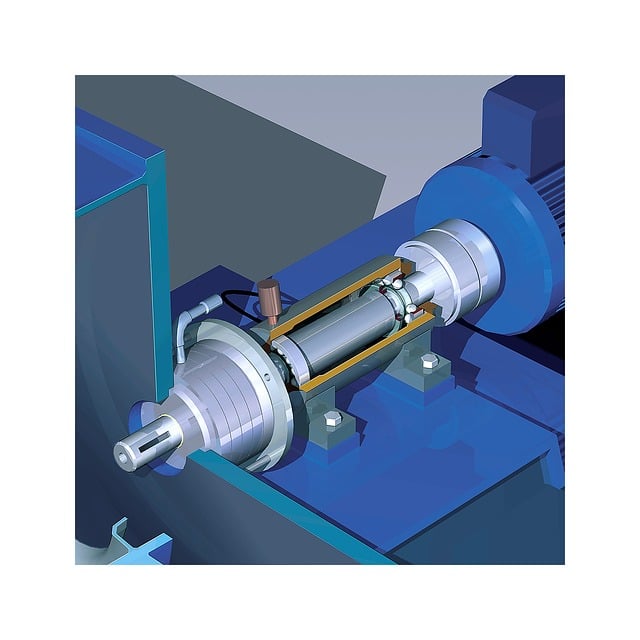Lighting system design and visualization leverage advanced technologies like power distribution CAD modeling for residential and commercial projects. This method allows architects to create detailed 3D models, simulate light patterns, optimize power distribution, predict shadow and glare issues, and plan component placement. It enhances aesthetics, energy efficiency, cost savings, and client communication, ensuring projects meet both functional and aesthetic requirements while adhering to safety standards and regulatory compliance. Power distribution CAD modeling is a game-changer in modern lighting design, enabling stakeholders to make informed decisions before construction begins.
Lighting system visualization is a game-changer for residential and commercial projects, offering precise representations that bridge design and reality. This article delves into the dynamic world of lighting visualization, exploring essential tools and technologies powering the process. We dissect the intricate dance between power distribution and CAD modeling techniques in lighting design. Additionally, we highlight unique considerations for visualizing residential versus commercial spaces while showcasing how advanced lighting visualization enhances both efficiency and aesthetics.
Understanding Lighting System Visualization: Tools and Technologies
Lighting system visualization is a powerful tool that allows designers and architects to visualize and plan lighting layouts for both residential and commercial projects. It involves using advanced technologies and software to create detailed, 3D representations of proposed lighting systems. These tools offer a comprehensive view of how light will interact with various spaces, helping professionals make informed decisions about power distribution and component placement.
CAD (Computer-Aided Design) modeling plays a significant role in this process, enabling precise creation and manipulation of digital models. With CAD software, designers can simulate different lighting scenarios, adjust parameters such as intensity and color temperature, and analyze the impact on spaces. This visualization not only aids in identifying potential issues early in the design phase but also facilitates effective communication between stakeholders, ensuring projects meet aesthetic and functional requirements.
Power Distribution in Lighting Design: CAD Modeling Techniques
In modern lighting design, efficient power distribution is a cornerstone for both residential and commercial projects. CAD (Computer-Aided Design) modeling plays a pivotal role in visualizing and optimizing this aspect. By integrating electrical systems into the initial design phase, architects and designers can ensure even light intensity and minimize energy wastage. Power distribution CAD models allow for precise planning of lighting fixtures, wiring routes, and circuit layouts, ensuring that every area receives adequate illumination while adhering to safety standards.
Through advanced 3D modeling software, professionals can simulate various lighting scenarios, predict shadow patterns, and identify potential glare issues. This enables them to make informed decisions regarding the placement of luminaires, dimmer switches, and control systems. Such meticulous planning not only enhances the overall aesthetic appeal but also contributes to energy efficiency and long-term cost savings for clients.
Residential vs Commercial Projects: Unique Visualisation Considerations
When visualizing lighting systems for residential and commercial projects, a key distinction lies in the unique considerations that arise from each sector. Residential spaces often require visualization that caters to personal aesthetics and comfort, focusing on the ambiance and emotional impact of lighting. This involves detailed power distribution planning within CAD modeling software to ensure every room receives adequate illumination while adhering to safety standards. On the other hand, commercial projects are driven by functionality, accessibility, and regulatory compliance. Visualization for these spaces must account for high traffic areas, task-specific lighting, and energy efficiency requirements, all while maintaining a professional and inviting atmosphere. Effective CAD modeling in this context enables precise planning of complex power distribution networks to meet diverse client needs.
Enhancing Efficiency and Aesthetics: The Role of Advanced Lighting Visualization
In today’s digital era, advanced lighting visualization tools are transforming the way we approach residential and commercial projects. By leveraging power distribution CAD modeling, designers and architects can create intricate lighting layouts that not only enhance efficiency but also elevate aesthetic appeal. This technology allows for precise simulation of light patterns, enabling stakeholders to make informed decisions about fixture placement, color schemes, and overall design before construction even begins.
Through detailed visualization, projects can be optimized for energy-efficient lighting solutions, ensuring optimal power distribution and reducing waste. This not only translates to significant cost savings but also contributes to a project’s environmental sustainability. Furthermore, the ability to preview how different lighting scenarios will look and feel can foster better client communication and satisfaction, making advanced lighting visualization a game-changer in both residential and commercial spaces.
Lighting system visualization is a powerful tool for both residential and commercial projects, offering enhanced efficiency and aesthetics through advanced technologies. Understanding tools like CAD modeling and their integration with power distribution networks is key to creating dynamic lighting designs. While residential and commercial spaces have distinct needs, effective visualization strategies ensure optimal illumination, saving time and resources. By leveraging these techniques, designers can create vibrant environments that meet the unique requirements of each project.
